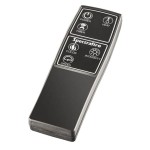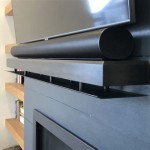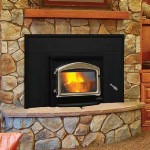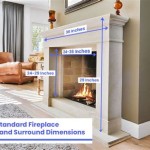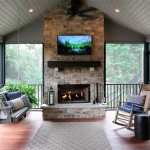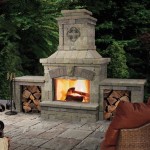Installing a Gas Fireplace in an Existing Chimney: Essential Considerations
Transforming an existing chimney into a cozy gas fireplace is a renovation project that can significantly enhance the ambiance and warmth of your home. However, careful planning and attention to detail are crucial to ensure a safe and efficient installation. Here are some essential aspects to consider when undertaking this project:
1. Chimney Inspection and Evaluation
Before proceeding with the installation, a thorough inspection of your existing chimney is essential. A qualified chimney contractor or professional can assess the chimney's condition, identify any potential issues, and determine its suitability for a gas fireplace. This includes checking the chimney's structural integrity, liner, damper, and overall stability.
2. Gas Supply and Piping
A dedicated gas supply line must be installed to provide fuel for the gas fireplace. The size and type of piping required will depend on the specific fireplace unit you choose. The gas line should be professionally installed according to local building codes and manufacturer specifications, ensuring proper venting and safety.
3. Fireplace Unit Selection
Selecting the right gas fireplace unit is crucial for achieving the desired heat output and efficiency. Consider the size of the room, the desired BTU rating, and the aesthetic style that complements your home. Consult with a fireplace specialist to discuss your options and ensure the fireplace unit is compatible with your existing chimney.
4. Installation and Venting
The installation of the gas fireplace unit and the associated venting system requires the expertise of a qualified technician. The unit is typically placed within the firebox of the chimney, and a vent pipe is connected to carry exhaust gases safely outdoors. Proper ventilation is essential for maintaining air quality and preventing carbon monoxide buildup.
5. Safety Features and Maintenance
Gas fireplaces are generally safe and reliable, but they must be equipped with essential safety features. These include an automatic ignition system, flame sensor, and temperature limiter. Regular maintenance is also crucial, including annual inspections by a certified technician to ensure the unit's optimal performance and safety.
6. Aesthetics and Finishing Touches
The installation of a gas fireplace in an existing chimney not only provides warmth but also serves as a focal point in your living space. Choose fireplace surrounds and mantels that complement your decor and create a cozy atmosphere. Consider adding decorative logs or pebbles to enhance the ambiance.
7. Professional Assistance
While the steps outlined above provide a general overview of the process, it is strongly recommended to consult with a professional for guidance and assistance throughout the project. A qualified fireplace contractor can ensure the safe and proper installation of your gas fireplace, providing peace of mind and a welcoming focal point in your home.

Existing Fireplace Or A Brand New Build Lopi Fireplaces

Venting A Gas Fireplace Through Existing Chimney Direct Vent Design

Adding A Gas Fireplace To An Existing Home Just Log Fires

Installing A Gas Fireplace Insert Into Existing Chimney Just Log Fires

Convert To Gas Installing Fireplace Inserts Doctor Flue

If You Have A Gas Fireplace It May Or Not Chimney Flue

Existing Fireplace Or A Brand New Build Lopi Fireplaces
-small.gif?strip=all)
How To Replace Your Old Open Fire With A New Efficient Gas Fireplace

Can A Wood Burning Fireplace Be Converted To Gas The Flame Company

How To Diffeiate Inserts Fireplaces
Related Posts

